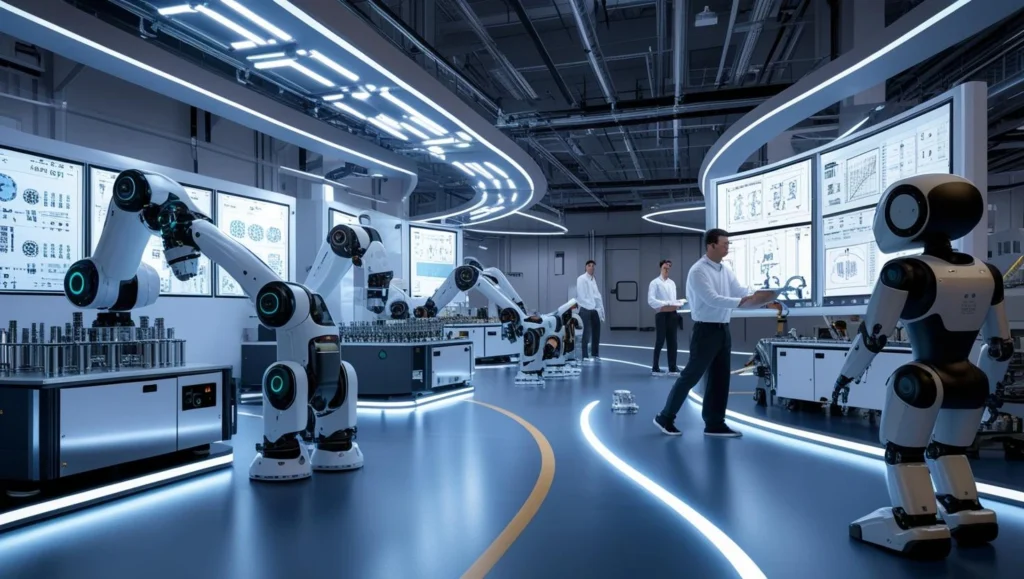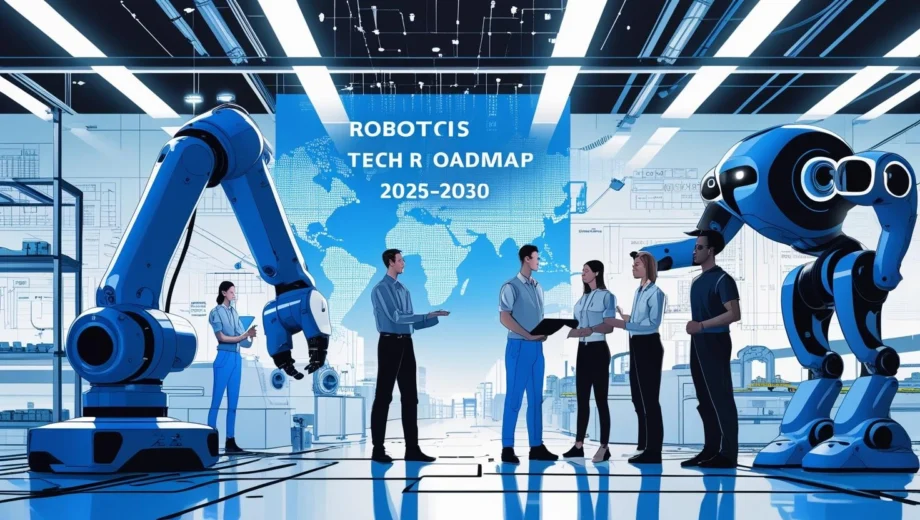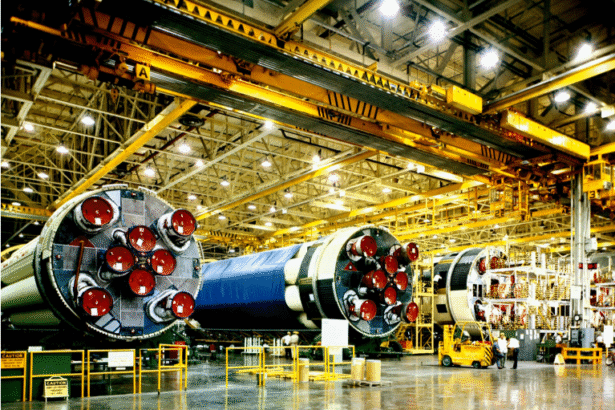Introduction
The Robotics Tech Roadmap is evolving at lightning speed. As we enter 2025, the convergence of advanced sensors, AI, and automation is accelerating robotics innovation on a global scale—from factory floors to hospitals and beyond. The global robotics market is projected to exceed $240 billion by 2030, fueled by rising demands for faster production, safer workplaces, and remote operational capabilities.
Trailblazers like Boston Dynamics are leading the way with humanoid and logistics robots, while industrial giants adopt intelligent robotic systems powered by AI. Yet, the journey mapped by the Robotics Tech Roadmap is not without its hurdles: ethical dilemmas, workforce adaptation, and real-time decision-making challenges remain critical.
This article presents a strategic future roadmap for robotics & automation, offering insight into the technologies, trends, and breakthroughs defining the next five years. You’ll discover advances in AI-enhanced autonomy, collaborative robots, sensor integration, and tips on where to buy robotics kits. We also connect you with essential resources like the IEEE Robotics Journal and link you to our guide on machine learning engineers for a broader automation perspective.
Overview of Robotics & Automation
What Is Robotics & Automation?
The Robotics Tech Roadmap starts with understanding its foundations. Robotics is a multidisciplinary field combining mechanical design, electronics, and intelligent computing to build autonomous systems. Automation, on the other hand, uses these machines to execute repetitive, high-risk, or precision tasks without human input.
Industrial Robots Today
From assembly lines to pharmaceutical packaging, industrial robots now perform with high accuracy, round-the-clock efficiency, and safety. Common systems use robotic arms, cameras, and smart algorithms to optimize manufacturing.
Current Challenges & Opportunities
| Challenge | Opportunity |
|---|---|
| High cost of adoption | Affordable modular robotics kits |
| Workforce upskilling | New jobs in robotics maintenance and design |
| AI safety & ethics | Regulatory innovation |
With the Robotics Tech Roadmap guiding strategic innovation, these challenges are turning into accelerators of change.
Key Developments in the Robotics Tech Roadmap

According to IEEE Spectrum’s robotics reports, here are the most influential shifts shaping the Robotics Tech Roadmap for 2025–2030:
1. Sensor Evolution & Perception
Modern robots are acquiring human-like senses, improving safety and autonomy:
- Lidar and depth sensors provide real-time 3D mapping.
- Tactile skins enable safer collaboration with humans.
- Sensor fusion systems process multiple inputs for adaptive responses.
These technologies are foundational to the Robotics Tech Roadmap, enabling systems to work safely in chaotic environments.
2. AI-Driven Autonomy
Artificial intelligence is the brain of modern robotics:
- Reinforcement learning allows robots to self-optimize.
- Computer vision aids in quality inspection and navigation.
- Natural language processing (NLP) enables voice-guided instructions for industrial bots.
AI's integration is a core pillar of the Robotics Tech Roadmap, advancing automation in logistics, healthcare, and defense.
3. Rise of Collaborative Robots (Cobots)
Cobots are central to the Robotics Tech Roadmap due to their:
- Shared workspaces with humans.
- Easy training via demonstration rather than programming.
- Growing use in SMEs for sorting, quality control, and precision tasks.
By 2030, cobots are expected to fulfill 60% of manufacturing automation roles.
4. Boston Dynamics & Industrial Innovation
Boston Dynamics leads with:
- Spot and Stretch – mobile, agile inspection and warehouse robots.
- Atlas – a humanoid robot pushing boundaries in dynamic mobility.
Other industry leaders in the Robotics Tech Roadmap:
- Agility Robotics – building bipedal delivery bots.
- ABB, KUKA, FANUC – dominating automotive automation.
- Soft Robotics – developing gentle touch systems for healthcare and food sectors.
5. Integration into Industry 4.0
The Robotics Tech Roadmap is aligned with Industry 4.0 through:
- IoT & Digital Twins for real-time performance simulation.
- Predictive maintenance using machine learning insights.
- Decentralized AI systems for real-time collaboration between machines.
As cyber-physical systems emerge, robotic decision-making will blend with human oversight in adaptive ecosystems.
Buying Robotics Kits: What to Consider
A key feature of the Robotics Tech Roadmap is democratizing access to robotics via kits. These kits allow anyone—from hobbyists to engineers—to build, test, and deploy robots.
What to Look For:
- Modular design (customizable)
- Programming support (Python, Arduino, ROS)
- Sensor variety (IMUs, cameras, lidar)
- Community access (open-source libraries, forums)
- Price (from $150 to $2,000 based on complexity)
Top Starter Robotics Kits (Aligned with Robotics Tech Roadmap):
- NVIDIA JetBot – beginner AI robotics using GPU acceleration.
- Robotis Bioloid – humanoid robotics for education.
- LEGO Mindstorms Inventor – ideal for kids and beginners.
- LewanSoul LX-06R – servo kits for human-like movement.
What’s Next in Robotics? Future Trends
The Robotics Tech Roadmap to 2030 forecasts rapid evolution in these areas:
1. Human–Robot Interaction
- Gesture recognition and emotion detection for personal robots.
- Voice assistants built into service bots for retail and elderly care.
2. Multi-Robot Collaboration
- Swarm robotics for tasks like agriculture spraying, cleaning, and disaster relief.
- Mesh networks enabling bots to communicate without central control.
3. Regulation & Ethics
- Legal frameworks around AI bias, safety standards, and robot accountability.
- ISO and EU robotics charters influencing future standards globally.
4. Fully Autonomous Mobility
- Delivery robots, farm bots, and drones will see exponential adoption.
With each step, the Robotics Tech Roadmap leads us closer to seamless machine integration in daily life.
Navigating IEEE Robotics Journal and Resources
To stay ahead on the Robotics Tech Roadmap, leverage top academic and industrial publications:
- IEEE Robotics & Automation Magazine – tech papers and trend reviews.
- IEEE Spectrum’s Robotics Section – latest in cobots, AI, and mobility.
- arXiv.org – preprints on robotic planning, navigation, and manipulation.
Other great resources:
- Boston Dynamics YouTube Channel
- ABB Automation Blog
- Agility Robotics Blog
Explore our Machine Learning Engineering Guide to complement your understanding of intelligent robotics systems.
Conclusion
The Robotics Tech Roadmap for 2025–2030 paints a future where smart, adaptive machines are embedded in global industries, public infrastructure, and even our homes. Robots will no longer just assemble—they’ll collaborate, learn, adapt, and assist.
This roadmap encourages aspiring innovators and professionals to explore robotics kits, follow breakthroughs by Boston Dynamics, and stay updated via IEEE Robotics Journal and global conferences.
As this transformative journey unfolds, following the Robotics Tech Roadmap ensures you're not just witnessing the automation revolution—you’re shaping it.








